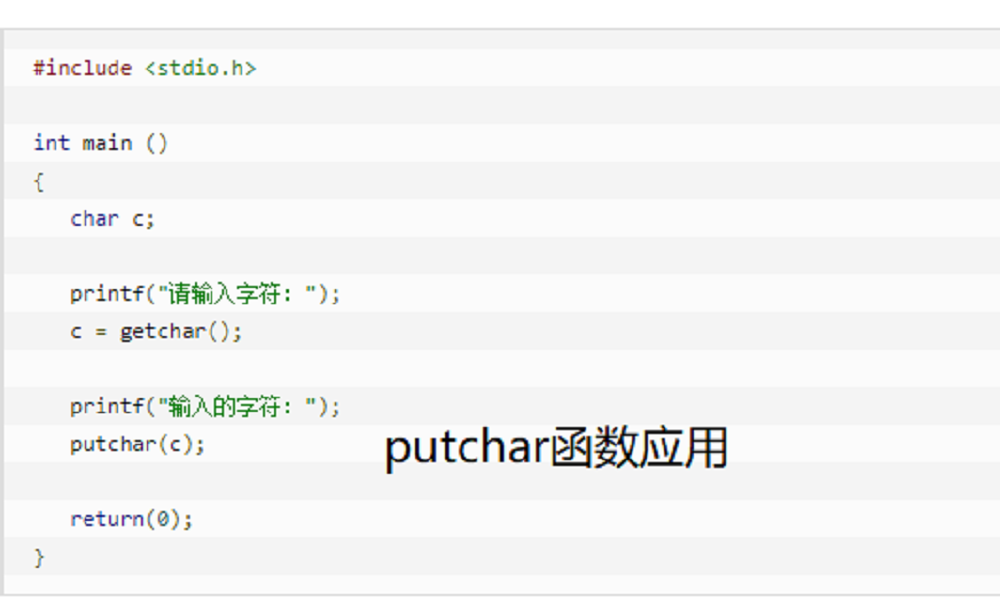putchar語法結構為 int putchar(int char) ,其功能是把參數 char 指定的字元(一個無符號字元)寫入到標準輸出 stdout 中,為C 庫函式 ,包含在C 標準庫 <stdio.h>中。其輸出可以是一個字元,可以是介於0~127之間的一個十進制整型數(包含0和127),也可以是用char定義好的一個字元型變數。
基本介紹
putchar語法
- char-- 這是要被寫入的字元。該字元以其對應的 int 值進行傳遞。
套用格式
注意事項
函式返回值
{
程式示例
示例1
#include <stdio.h>/* define some box-drawing characters */#define LEFT_TOP 0xDA#define RIGHT_TOP 0xBF#define HORIZ 0xC4#define VERT 0xB3#define LEFT_BOT 0xC0#define RIGHT_BOT 0xD9int main(void){char i, j;/* draw the top of the box */putchar(LEFT_TOP);for(i=0; i<10; i++){putchar(HORIZ);putchar(RIGHT_TOP);putchar('\n');}/* draw the middle */for(i=0; i<4; i++)putchar(VERT);for (j=0; j<10; j++){putchar(' ');putchar(VERT);putchar('\n');/* draw the bottom */putchar(LEFT_BOT);}for(i=0; i<10; i++){putchar(HORIZ);putchar(RIGHT_BOT);putchar('\n');return 0;}}示例2
#include <stdio.h>int main(){char a,b,c;a='T';b='M';c='D';putchar(a);putchar(b);putchar(c);putchar('\n');putchar(a);putchar('\n');putchar(b);putchar('\n');putchar(c);putchar('\n');return 0;}輸出結果為:TMDTMD

